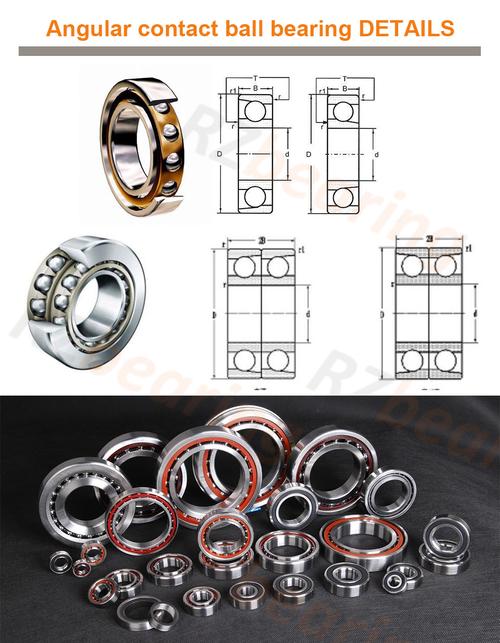5 Essential Applications of Ball Bearings in Modern Machinery
Ball bearings are precision-engineered components designed to reduce rotational friction while supporting axial and radial loads. Their unique structure enables smooth motion transfer across countless industrial applications, making them indispensable in machinery requiring high-speed operation, durability, and energy efficiency.
1、ball bearings in automotive industry2、aerospace applications of ball bearings
3、medical equipment using ball bearings
4、robotics and ball bearing technology
5、wind turbine ball bearing systems
1、ball bearings in automotive industry

Modern vehicles utilize ball bearings in over 30 critical components, from wheel hubs to transmission systems. High-performance tapered roller bearings handle vehicle weight in wheel assemblies, while miniature bearings enable precise throttle control. Hybrid ceramic bearings in electric vehicle motors reduce electrical arcing risks. The latest development includes smart bearings with embedded sensors that monitor temperature and vibration in real-time, predicting maintenance needs. Automotive manufacturers demand bearings with ISO P5 precision grades (5μm tolerance) to ensure engine components like turbochargers operate at 150,000 RPM without failure.
2、aerospace applications of ball bearings
Aircraft systems require bearings that withstand extreme conditions: -55°C to 300°C temperatures combined with 15G acceleration forces. Vacuum-compatible bearings in satellite mechanisms use special lubricants preventing outgassing. Jet engine main shaft bearings utilize advanced materials like M50 steel (58-62 HRC hardness) and hybrid ceramic variants. The Boeing 787 Dreamliner contains over 2,800 precision bearings in flight control systems alone. Recent innovations include self-lubricating bearings for Mars rovers and magnetic bearings in next-gen hypersonic aircraft that eliminate physical contact between surfaces.
3、medical equipment using ball bearings
Medical-grade bearings meet ISO 13485 standards with ultra-clean manufacturing processes. MRI machines employ non-magnetic titanium bearings to prevent imaging interference. Surgical robots require bearings with micron-level precision (ABEC 7/9 ratings) for tremor-free movement. Dental handpieces use miniature bearings spinning at 400,000 RPM with specialized coolant resistance. Implantable devices like ventricular assist devices incorporate biocompatible bearings made from cobalt-chromium alloys. The global medical bearing market is projected to reach $2.3 billion by 2027, driven by demand for minimally invasive surgical tools.
4、robotics and ball bearing technology
Industrial robots require bearings that simultaneously handle radial, axial, and moment loads. Articulated robot joints use crossed roller bearings with 0.002mm rotational accuracy. Collaborative robots (cobots) employ quiet bearings with noise levels below 20dB. Space robotics demand radiation-resistant bearings, like those used in the Canadarm2 ISS manipulator. Recent advancements include 3D-printed bearings with lattice structures reducing weight by 40% while maintaining load capacity. The ROS-Industrial consortium specifies IP67-rated bearings for washdown environments in food processing automation.
5、wind turbine ball bearing systems
Modern 8MW wind turbines use bearings exceeding 4 meters in diameter. Main shaft bearings utilize ISO 281:2007 life calculations, designed for 175,000 operating hours. Pitch control systems employ four-point contact bearings handling alternating axial loads from blade adjustments. Condition monitoring systems track bearing vibrations using ISO 10816-3 standards. Floating bearing arrangements compensate for shaft misalignment caused by tower flexing. The latest designs incorporate sensor-equipped bearings that transmit real-time load data via IoT networks, optimizing maintenance schedules.
From high-speed trains to semiconductor manufacturing equipment, ball bearings enable technological progress across industries. Automotive innovations demand heat-resistant bearings for regenerative braking systems, while medical advancements require nano-scale precision components. Aerospace applications push material science boundaries, and renewable energy systems rely on mega-scale bearing solutions. Understanding these diverse applications helps engineers select optimal bearing configurations – whether choosing stainless steel bearings for corrosive environments or hybrid ceramics for electrical insulation. As Industry 4.0 evolves, smart bearings with embedded diagnostics will become critical components in predictive maintenance strategies.
This comprehensive guide demonstrates how ball bearings serve as fundamental components across multiple industries. Their evolving designs address unique operational challenges – from extreme temperatures in jet engines to sterilization requirements in medical devices. As technological demands increase, bearing manufacturers continue developing innovative solutions using advanced materials and smart monitoring capabilities. Understanding these applications helps professionals make informed decisions when specifying bearings for critical systems.




 13869596835
13869596835